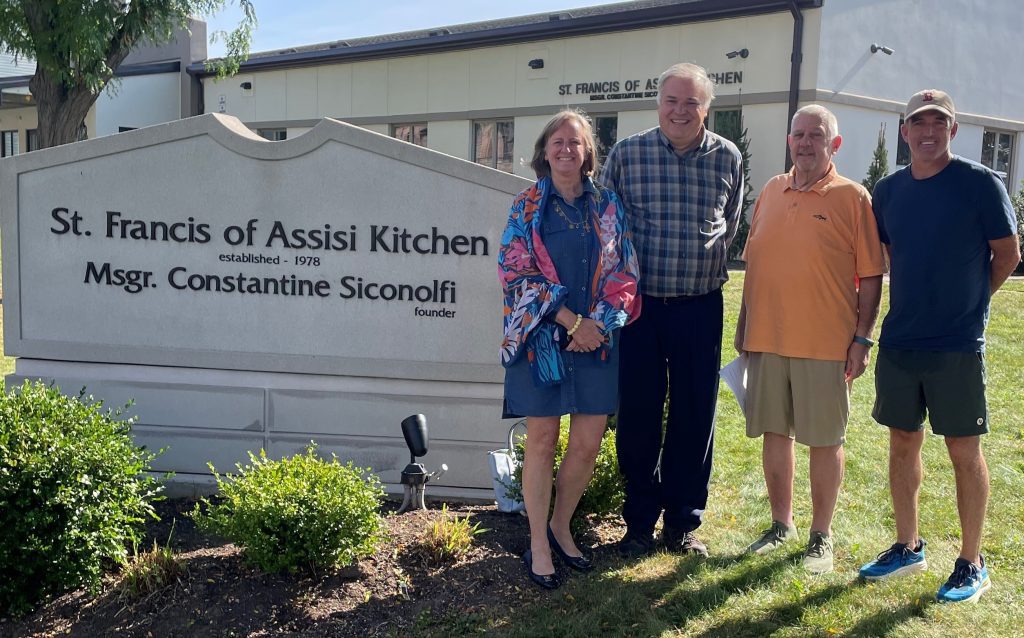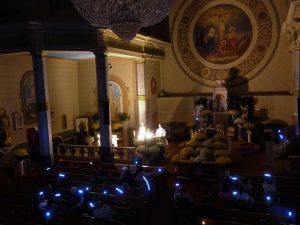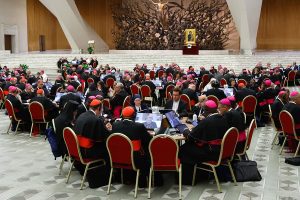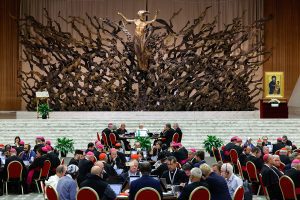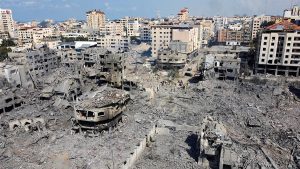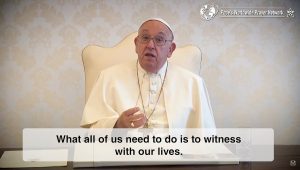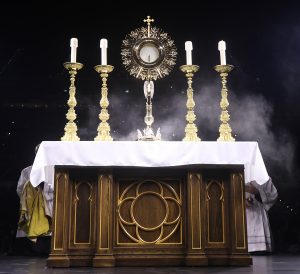VATICAN CITY (CNS) – Pope Francis announced he would create 21 new cardinals Dec. 8, including a 99-year-old former nuncio and the 44-year-old Ukrainian bishop who heads his church’s eparchy in Melbourne, Australia.
The 21 cardinals-designate named by the pope Oct. 6 hail from 18 nations. Eight of the cardinals come from Europe, five from Latin America, five from Asia, two from Africa and just one from North America — Archbishop Francis Leo of Toronto.
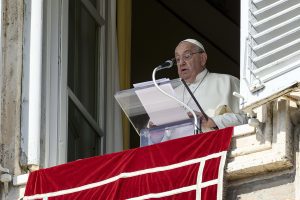
“Their origin expresses the universality of the church, which continues to proclaim God’s merciful love to all people on earth,” the pope said after reciting the Angelus prayer at midday with visitors in St. Peter’s Square.
Creating them cardinals and formally making them part of the Diocese of Rome, he said, “manifests the inseparable bond between the See of Peter and the particular churches spread throughout the world.”
Within his announcement of the new cardinals, Pope Francis also announced that as of Oct. 6 his new vicar for the Diocese of Rome would be Cardinal-designate Baldassare Reina, a Rome auxiliary bishop who had been serving as vice regent of the diocese, which the pope heads.
Pope Francis included on the list of new cardinals Dominican Father Timothy Radcliffe, a theologian and former master of the Dominican order, who has been serving as spiritual adviser to the Synod of Bishops on synodality.
Indian Msgr. George Jacob Koovakad, an official of the Vatican Secretariat of State who is responsible for organizing papal trips, was also among those named.
The oldest on the list is Italian Archbishop Angelo Acerbi, 99, a career Vatican diplomat who served in New Zealand, Colombia, Hungary, Moldova and the Netherlands before retiring in 2001.
The youngest is 44-year-old Ukraine-born Bishop Mykola Bychok, who was named head of the Ukrainian Eparchy of Sts. Peter and Paul of Melbourne, Australia, in 2020.
Here is the complete list in the order named by the pope:
— Italian Archbishop Angelo Acerbi, former nuncio, 99.
— Archbishop Carlos Gustavo Castillo Mattasoglio of Lima, Peru, 74.
— Archbishop Vicente Bokalic Iglic of Santiago del Estero, Argentina, 72.
— Archbishop Luis Gerardo Cabrera Herrera of Guayaquil, Ecuador, who will be 69 Oct. 11.
— Archbishop Fernando Natalio Chomalí Garib of Santiago, Chile, 67.
— Archbishop Tarcisio Isao Kikuchi of Tokyo, who will be 66 Nov. 1.
— Bishop Pablo Virgilio Siongco David of Kalookan, Philippines, 65.
— Archbishop Ladislav Nemet of Belgrade of Belgrade, Serbia, 68.
— Archbishop Jaime Spengler of Porto Alegre, Brazil, 64.
— Archbishop Ignace Bessi Dogbo of Abidjan, Ivory Coast, 63.
— Archbishop Jean-Paul Vesco of Algiers, Algeria, 62.
— Bishop Paskalis Bruno Syukur of Bogor, Indonesia, 62.
— Archbishop Dominique Joseph Mathieu of Tehran and Isfahan, Iran, 61.
— Archbishop Roberto Repole of Turin, Italy, 57.
— Auxiliary Bishop Baldassare Reina of Rome, who will turn 54 Nov. 26 and whom the pope named Oct. 6 as his vicar for the Diocese of Rome.
— Archbishop Francis Leo of Toronto, 53.
— Lithuanian Archbishop Rolandas Makrickas, coadjutor archpriest of Rome’s Basilica of St. Mary Major, 52.
— Bishop Mykola Bychok of the Ukrainian Eparchy of Sts. Peter and Paul of Melbourne, Australia, 44.
— English Dominican Father Timothy Radcliffe, theologian, 79.
— Italian Scalabrinian Father Fabio Baggio, undersecretary and head of the section for migrants and refugees at the Dicastery for Promoting Integral Human Development, 59.
— Indian Msgr. George Jacob Koovakad, 51, an official of the Vatican Secretariat of State who is responsible for organizing papal trips.

